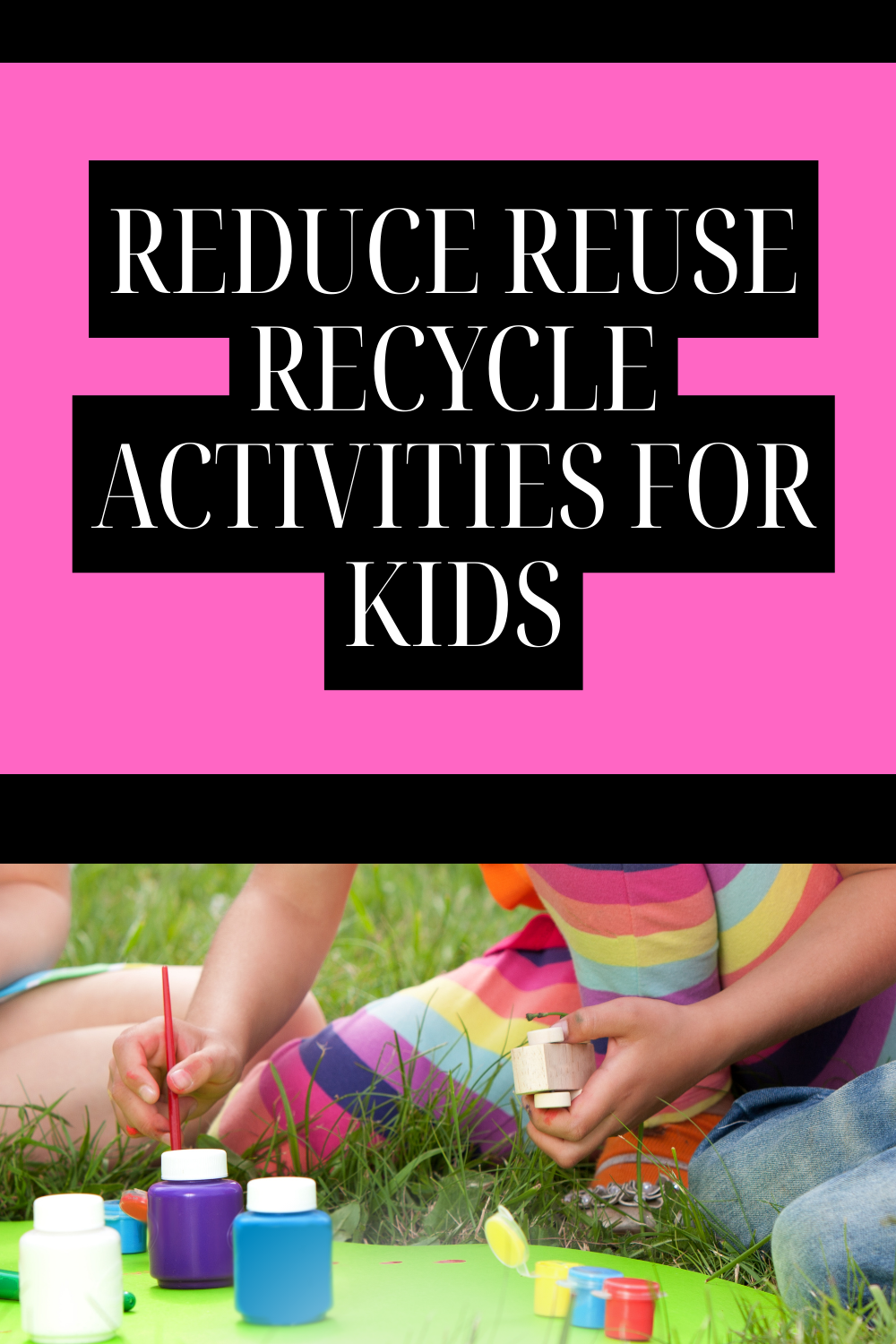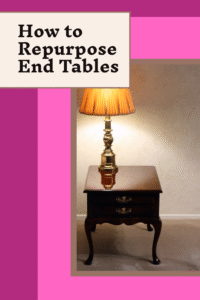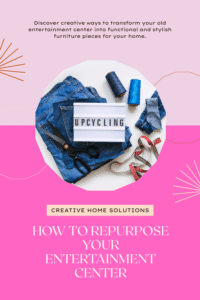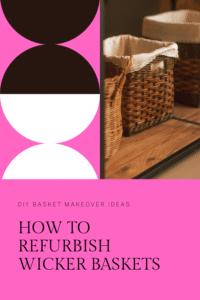Have you ever found your kids throwing away something that could have been reused or recycled?
It happens more often than we think, but the good news is that there’s a simple solution teaching kids through hands-on activities.
When they’re involved in the process, they’ll naturally want to make better choices for the environment.
Let’s dive into some creative activities that will get your kids excited about reducing, reusing, and recycling!
1. DIY Recycled Art Projects
What better way to teach kids about reusing than through a fun art project? Use old newspapers, cardboard, plastic bottles, and other discarded materials to create unique artwork. This activity not only helps kids understand the value of reusing materials, but it also sparks their creativity.
How to do it:
- Collect various materials that are typically thrown away, such as cardboard boxes, old newspapers, or plastic containers.
- Provide paints, glue, and scissors.
- Let the kids use these materials to create sculptures, collages, or even functional items like pencil holders or picture frames.
Tip: Make sure to remind the kids that these materials were previously considered “trash” but now have a second life thanks to their creativity!
Mistakes to avoid:
- Avoid overwhelming children with too many materials. Keep it simple by providing a few options for them to choose from.
- Don’t forget to emphasize the importance of using non-toxic paints and adhesives for safety.
2. Create a Composting Bin for Kitchen Scraps
Composting is a fantastic way to reduce waste and give kids a real understanding of how organic materials break down to nourish the earth. Setting up a composting bin in your home or school gives kids a firsthand experience of turning food scraps into rich, usable soil.
How to do it:
- Choose a spot in the backyard (or inside if you’re using a composting bin).
- Explain what can be composted: vegetable peels, fruit cores, and coffee grounds. Avoid adding meat, dairy, and oils.
- Encourage kids to collect these materials from the kitchen and add them to the compost bin.
- Over time, let them check on the progress and notice how the materials turn into soil.
Tip: Composting is a fun science lesson that shows how waste can be turned into something useful. You can also use the compost to grow plants and flowers, making it a full-circle educational experience.
Mistakes to avoid:
- Ensure the compost is turned regularly to avoid unpleasant odors.
- Don’t add non-compostable items like plastic or glass—this will only contaminate the compost.
3. Recycled Paper Making
If you’re looking for a hands-on activity that’s both fun and educational, recycled paper making is an excellent choice. Not only does it teach kids about reducing waste, but it also gives them a deeper understanding of how paper is made and how it can be recycled.
How to do it:
- Start by tearing up old newspapers, used wrapping paper, or scrap paper into small pieces.
- Soak the paper pieces in water overnight to soften them.
- Once the paper is soaked, blend it into a pulp using a blender.
- Pour the pulp into a shallow container, then use a frame or mesh to strain out the excess water.
- Let the paper dry for 24-48 hours, and you’ll have homemade recycled paper!
Tip: Add color or even seeds to your paper pulp to make unique, eco-friendly greeting cards or bookmarks.
Mistakes to avoid:
- Don’t rush the drying process; let the paper fully dry before using it, or it may fall apart.
- Make sure to properly clean your blender before and after using it for paper pulp.
4. DIY Reusable Shopping Bags
One of the best ways to reduce waste is by cutting down on plastic bags. With kids, a great project is making reusable shopping bags. Not only will this reduce waste, but it’s also an opportunity for kids to express their personalities with fun designs.
How to do it:
- Gather some old t-shirts or fabric scraps.
- Cut the fabric into squares or rectangles to form the body of the bag.
- Show the kids how to fold the fabric, sew the sides, and add handles (or use fabric glue if sewing is too complicated).
- Let the kids decorate the bags with fabric markers, paint, or even iron-on patches.
Tip: These reusable bags can make fantastic gifts for family members or teachers!
Mistakes to avoid:
- Make sure the handles are securely attached to avoid them breaking while carrying groceries.
- If you’re using fabric glue, ensure it’s suitable for the fabric and non-toxic.
5. Recycled Bottle Garden Planters
Instead of tossing out empty plastic bottles, turn them into mini garden planters! This simple project is a great way to teach kids how recycling can also enhance the beauty of their environment.
How to do it:
- Cut plastic bottles in half or create slits in the sides.
- Fill the bottom with small stones for drainage, then add soil.
- Let the kids plant small flowers, herbs, or vegetables in their recycled planters.
- Watch the plants grow and explain how recycling and gardening work together to create a more sustainable environment.
Tip: Use these planters to teach kids about plant care, water conservation, and the importance of growing their own food.
Mistakes to avoid:
- Make sure the plastic bottle has drainage holes to prevent waterlogging.
- Avoid using bottles that have contained chemicals or non-food-safe materials.
6. Create a Bottle Cap Mosaic
A fun and artistic way to reuse bottle caps is by turning them into colorful mosaics. This activity will engage kids’ creativity while promoting the idea of reusing everyday items that would normally end up in the trash.
How to do it:
- Collect bottle caps from bottles of soda, water, or any other beverages.
- Gather a sturdy surface, such as a wooden board or thick cardboard.
- Lay out the bottle caps in different patterns or designs to create a mosaic.
- Use hot glue or a strong adhesive to secure the caps in place.
- Once the glue has dried, display the mosaic as a unique piece of art.
Tip: You can make this activity more educational by discussing color theory or patterns while working on the mosaic!
Mistakes to avoid:
- Ensure the surface is clean before starting to make sure the caps will stick properly.
- Don’t forget to supervise children closely when using glue guns, as they can be hot.
7. Recycle Old Clothes into Rags or Quilts
Old clothes can pile up in our closets, but they don’t need to be thrown away. Instead, repurpose them into useful items like rags for cleaning or quilts for a cozy home accessory. This teaches kids how even items we no longer wear can still have value.
How to do it:
- Gather old clothes, especially ones with no further use.
- Cut them into smaller pieces to create cleaning rags, or into squares to make a quilt.
- Show kids how to sew the pieces together (or use fabric glue for younger children).
- Encourage them to add their own design elements, like patches or embroidery, to personalize the quilt.
Tip: This is a great project to do with old clothes that are worn out but still have good fabric left.
Mistakes to avoid:
- Ensure you choose clothes that are made from fabric suitable for reusing (cotton, wool, etc.).
- Don’t forget to pre-wash the clothes before starting the project to ensure they’re clean.
8. Turn Egg Cartons into Fun Craft Projects
Instead of throwing away empty egg cartons, repurpose them into a variety of fun and creative craft projects. This activity is a perfect way to engage kids in recycling while making something they can proudly display.
How to do it:
- Gather some empty egg cartons (paper or plastic).
- Cut the carton into sections depending on the craft project.
- For a flower craft, paint each section to look like flower petals, then glue them together.
- Use the carton for sorting small objects, creating animal shapes, or even making bird feeders.
Tip: Egg cartons are great for creating 3D crafts, as they have a sturdy yet flexible texture.
Mistakes to avoid:
- Be cautious with the type of paint used. Use non-toxic paint to ensure the safety of kids.
- Avoid using egg cartons with any leftover egg residue; they should be thoroughly cleaned before use.
9. Start a Recycled Paper Pulp Project
This is another creative way to get kids involved in recycling, and it doubles as a science lesson. Making recycled paper pulp teaches kids how paper can be reused and turned into new products. It’s a hands-on project that brings out kids’ natural creativity.
How to do it:
- Tear up old paper, newspapers, or scrap paper into small pieces.
- Soak the paper in water overnight.
- After soaking, blend the paper into a pulp using a blender (you can add a bit of water to help the process).
- Spread the pulp on a flat surface, like a baking sheet, and press it flat.
- Let it dry for 24-48 hours. You can then use it as new handmade paper for writing, cards, or even as a base for more crafts.
Tip: Kids can experiment with adding dried flowers, glitter, or food coloring to the pulp to make their own personalized paper.
Mistakes to avoid:
- Make sure to fully dry the pulp before using it, as damp paper can easily tear or get damaged.
- Be careful with the blender when making the pulp; always supervise children when using kitchen appliances.
10. Recycled Tin Can Wind Chimes
Recycling tin cans into something musical can be a fun and engaging way for kids to contribute to reducing waste. These wind chimes not only reuse materials but also create a beautiful sound that can be hung up outdoors.
How to do it:
- Collect empty tin cans (make sure they have smooth edges by removing any sharp metal).
- Paint or decorate the cans with colorful designs.
- Drill holes at the top of each can and tie a string through the holes.
- Hang the cans together, making sure they have enough space to clink together when the wind blows.
- Add beads or buttons to make the chimes more decorative.
Tip: This project allows kids to decorate the cans however they like, giving them full control over the look of their wind chimes!
Mistakes to avoid:
- Ensure that the cans are thoroughly cleaned and that the edges are safe to touch.
- Be careful with the drill children should only help with the decoration, not with the drilling.
11. DIY Recycled Crayons
Instead of throwing away broken crayons, turn them into new, fun ones! This activity teaches kids that even something as small as a crayon can be recycled and reused.
How to do it:
- Gather all the broken crayons and peel off any paper wrappers.
- Break the crayons into small pieces and place them in a muffin tin or silicone mold.
- Preheat the oven to 250°F (121°C) and bake the crayons for about 10-15 minutes or until fully melted.
- Allow the crayons to cool and harden. Once they’re solid, they’re ready to use again.
Tip: Use the opportunity to teach kids about color mixing by combining different colors of broken crayons to create new shades.
Mistakes to avoid:
- Ensure the molds are non-stick to prevent the crayons from sticking when they cool.
- Never leave the children unattended in the kitchen while baking the crayons.
12. Make Recycled Windmills from Paper and Plastic
This fun and educational activity combines art and science by making windmills from recycled materials. Kids will learn about renewable energy sources while getting creative with their designs.
How to do it:
- Use old magazines, plastic bottles, and wooden sticks.
- Cut the magazines into squares and fold them into windmill shapes.
- Attach the blades to the wooden stick using a pin or staple.
- Decorate the windmill with paints or markers, and place it outside to spin in the wind.
Tip: If possible, teach kids about the energy behind windmills and how they contribute to sustainable energy generation.
Mistakes to avoid:
- Make sure the windmill blades are well-attached to the stick to avoid them coming loose in the wind.
- Always supervise young kids while using scissors or sharp objects.
13. Build a Bird Feeder Using Toilet Paper Rolls
Toilet paper rolls are a great material to repurpose into a fun project that helps local wildlife. Kids can easily create bird feeders with just a few simple materials.
How to do it:
- Take an empty toilet paper roll and spread peanut butter all over it.
- Roll the peanut butter-coated tube in bird seed.
- Slide the tube onto a tree branch or place it in a spot where birds can easily access it.
Tip: You can experiment with different seeds or even create a series of bird feeders to attract various types of birds.
Mistakes to avoid:
- Ensure the peanut butter used is safe for birds avoid adding sugar or artificial sweeteners.
- Be cautious of allergies, especially when handling food materials like peanut butter.
14. Recycled Toy Car Race
If you have old cardboard and plastic materials, you can turn them into toy cars for a fun race. This activity lets kids repurpose materials while learning about motion and physics in a fun, hands-on way.
How to do it:
- Collect empty plastic bottles, bottle caps, and cardboard.
- Use the cardboard to create the car’s body and attach plastic bottle caps as wheels.
- Let the kids decorate their toy cars with paints or markers.
- Set up a race track and watch the toy cars zoom down the lane!
Tip: You can teach kids basic principles of physics, like motion and energy, while building the cars and racing them.
Mistakes to avoid:
- Make sure the wheels are securely attached to the body to avoid the cars falling apart during the race.
- Avoid using sharp objects to cut the cardboard opt for child-safe scissors.
15. Recycled Plastic Bottle Terrarium
Creating a plastic bottle terrarium is a simple and creative way to recycle plastic bottles while teaching kids about plant care and the benefits of reusing materials.
How to do it:
- Cut an empty plastic bottle in half.
- Fill the bottom with small rocks for drainage, then add soil and plants.
- Place the top half of the bottle back over the plants, creating a mini greenhouse effect.
- Watch the plants grow and thrive in their new home.
Tip: This is a great way to introduce kids to the concept of ecosystems and how plants and nature work together.
Mistakes to avoid:
- Ensure the terrarium gets enough light but isn’t exposed to direct sunlight for long periods, as it can overheat.
- Water the plants carefully too much water can cause mold or mildew to form inside the bottle.
Table of Recycled Craft Activities for Kids
| Activity | Materials Needed | Learning Outcome |
| DIY Recycled Art Projects | Old newspapers, cardboard, plastic bottles, glue, paint | Teaches reusing materials and boosts creativity |
| Composting Bin for Kitchen Scraps | Compost bin, vegetable scraps, coffee grounds, water | Demonstrates how food waste can be converted into nutrient-rich soil |
| Recycled Paper Making | Old paper, blender, water, tray for drying | Teaches the recycling process and the importance of reusing paper |
| Reusable Shopping Bags | Old t-shirts, fabric scraps, scissors, thread | Promotes reducing plastic waste and reusing fabric |
| Recycled Bottle Garden Planters | Plastic bottles, soil, seeds, rocks for drainage | Teaches kids about sustainable gardening and reusing plastic |
Conclusion
Teaching kids about the importance of reducing, reusing, and recycling doesn’t have to be a chore it can be a fun and engaging experience that shapes their attitudes toward the environment for years to come.
These activities not only encourage sustainability but also foster creativity, critical thinking, and problem-solving skills.
By incorporating these activities into your routine, you’re helping to plant the seeds of a more environmentally conscious generation. So, gather some supplies and start getting creative with your kids today!
Remember, no action is too small when it comes to making a positive impact on the planet. Whether you’re reusing plastic bottles, making recycled paper, or building a bird feeder, each step counts toward a more sustainable future.
FAQs (Frequently Asked Questions)
1. How can I make recycling fun for kids?
Making recycling fun for kids involves engaging them in hands-on activities like making art from recycled materials, creating compost bins, or building bird feeders. By involving them in the process, they’ll develop a sense of accomplishment while learning about the importance of sustainability.
2. What is the best way to explain recycling to kids?
It’s helpful to explain recycling by showing them how everyday items can have a second life. Use examples from their daily life, like turning old newspapers into art or explaining how a compost bin turns food scraps into valuable soil. Visuals and hands-on projects can make recycling more relatable.
3. Are there any specific age groups for these activities?
Most of these activities can be adjusted for different age groups. Younger children can focus on simpler tasks like painting or decorating, while older children can tackle more involved projects like building wind chimes or making recycled paper. Tailor the complexity based on the child’s ability.
4. What are the benefits of teaching kids about sustainability early on?
Teaching kids about sustainability helps them develop good habits and an understanding of how their actions impact the environment. Early education fosters eco-consciousness, empowering them to make informed choices in the future, whether at home, school, or in their communities.
5. How can I incorporate recycling into daily routines at home?
Incorporating recycling into daily routines can be done by setting up recycling bins, involving kids in sorting recyclables, and encouraging the reuse of materials for crafts. Regularly discuss the importance of reducing waste and show how small actions, like using a reusable shopping bag, can have a big impact.
I hope these activities spark some creative fun and learning in your household or classroom! Try them out and share your results with us let’s all work together to build a more sustainable future for our kids.
If you found this blog post helpful, don’t forget to share it with others who might enjoy these eco-friendly activities. Let’s make reducing, reusing, and recycling a regular part of our lives!




